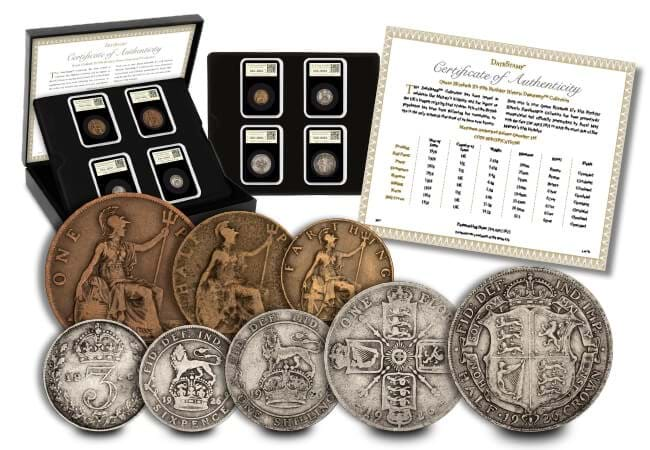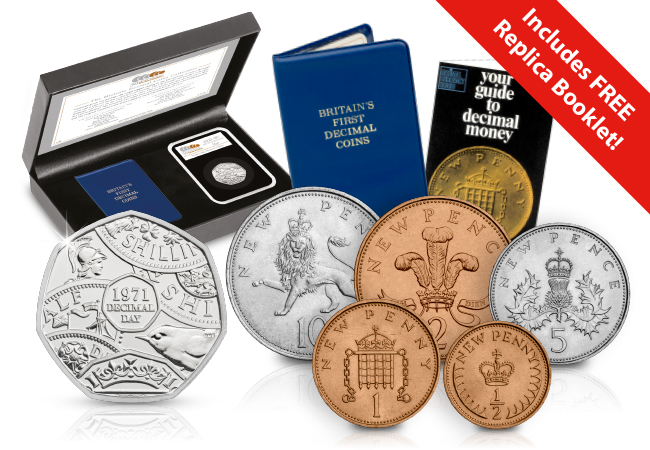Posts Tagged ‘shilling’
Unboxing a unique tribute to the Queen’s 95th Birthday
In my latest video I unbox an historic tribute that’s been issued to mark the 95th Birthday of Her Majesty Queen Elizabeth II.
But ONLY 195 have been released WORLDWIDE, making it one of the most unique and limited ways to pay tribute to the Queen and her longevity.
If you’re interested…
Click here to be one of only 195 collectors worldwide to own this historic set >>
Decimalisation: Your top five questions answered
This year marks the 50th anniversary of the Decimalisation of our currency. On 15th February 1971, known as Decimal Day (or D-Day), the country switched to the decimal currency (based on multiples of 10 and 100) that we are familiar with today. But what happened on that day, and why is it important to collectors?
Before then, Britain used a monetary system that dated thousands of years back to the Roman Empire! The problem with the old Pounds, Shillings, and Pence system (sometimes called ‘old money’) is that it was based on multiples of 12 and 240. This made it quite confusing – there were 12 pennies in a shilling and 240 pennies in a pound, and 20 shillings made a pound – certainly not easy to add up in your head!
We get a lot of questions about Decimalisation, so before we celebrate the anniversary next month, we’ve answered some of your top questions about the biggest change to UK currency ever!
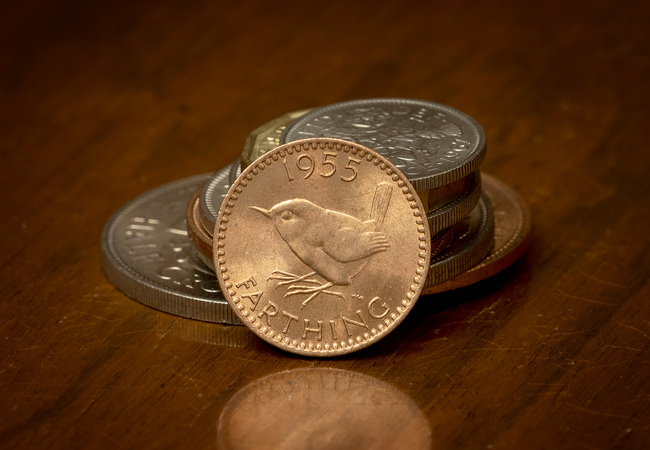
What were the coins called before Decimalisation?
The Pounds (£), Shillings (/-) and Pence (d) system included lots of coins with very different names to today’s coinage. A lot of these coins were given slang nicknames, such as ‘thrupence’ or ‘thrupny bit’ for a threepence, or a tanner for a sixpence. A Shilling was sometimes called a ‘bob’, and a ten shilling note would often be referred to as a ‘ten-bob‘ note.
| Pre-decimal Coin | Amount | Decimal Equivalent |
| Halfpenny | ½d. | 5⁄24p ≈ 0.208p |
| Penny | 1d. | 5⁄12p ≈ 0.417p |
| Threepence | 3d. | 1¼p |
| Sixpence | 6d. | 2½p |
| Shilling | 1/- | 5p |
| Florin | 2/- | 10p |
| Half Crown | 2/6 | 12½p |
| Crown | 5/- | 25p |
Who was the first country to go decimal?
Did you know the UK wasn’t the first country to go decimal? In fact, as early as 1704 Russia introduced the Ruble which was equal to 100 Kopecks, making it the first country to have a decimal coin. It was followed by France which introduced the Franc in 1795. Although the UK was one of the last to turn decimal, discussions first started in Britain as early as the 1820s, but the idea didn’t take off well with the public so it wasn’t until 150 years later that it actually happened.
When were the first decimal coins issued?
The first new decimal coins were actually issued before decimal day in 1971 – three years earlier in fact! In 1968 the plans for decimalisation were set in motion. To try and help the public acclimatise to the new decimal coins, the 5p and 10p, were issued, followed by the 50p a year later in 1969. This meant that the coins circulated alongside their pre-decimal siblings (Shilling, Florin, and 10 bob note) and were used interchangeably. By 1971 when the pre-decimal coinage ceased to be legal tender, only 3 new coins would be introduced (Half pence, one pence, two pence), making the jump to decimal currency a little easier for the public.
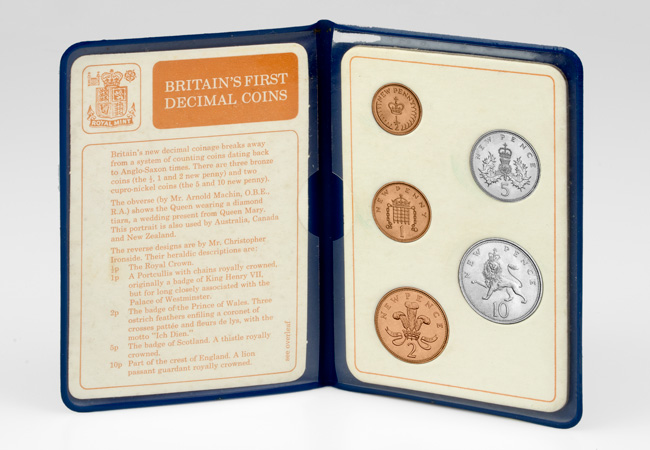
Why did the banks close for four whole days?
In 1971, very few banks used digital systems so on 10th February the banks closed for four days until Decimal Day. This allowed all outstanding cheques to be cleared in old money and all customers accounts to be converted into decimal coinage – and because most banks weren’t computerised, this had to be done manually! February was actually chosen as it was the quietest time of year for banks, shops, and public transport. It’s hard to imagine the banks closing for four days in a row now!
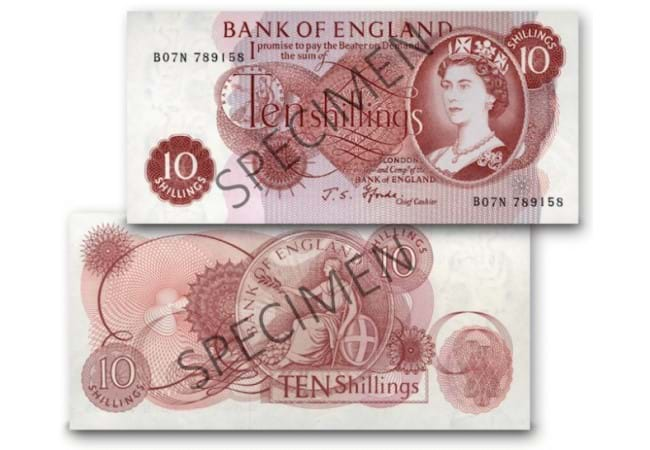
How did people compare between the two currencies?
Many people worried about shopkeepers inflating the prices of products during the changeover, but with a public information campaign that ran for almost 2 years prior, many people already had some idea of the conversions. And to help, currency convertors were made available to people, and shops displayed the prices in both currencies before and after Decimal Day. People could also continue to pay in old money, but they would receive their change in new money.
It took some time, but soon the decimal currency became familiar to everyone and continues to be the biggest change to UK coinage in thousands of years. In the lead up to the 50th anniversary, we’ll be issuing a series of blogs telling you all you need to know about this iconic moment in numismatic history, so make sure to stay tuned!
If you’re interested:
You can commemorate the 50th anniversary of Decimalisation now with the Historic Decimal Coins Collection! Including an ORIGINAL Decimal Coin Wallet, BRAND NEW BU 50p, and a FREE replica booklet. Click here to secure your Historic Decimal Coins Collection for JUST £29.99!
The political scandal that created the 18th century’s most interesting coin…
It is hard to imagine a scandal taking place today where the political leaders of our country are arrested for causing the financial markets to crash. But that is exactly what happened when the ‘South Sea Bubble’ burst.
The ‘South Sea Bubble’ was a political and financial scandal that led to the arrests of leading members of Parliament and the near collapse of the stock market. From this turmoil one of the 18th Century’s most interesting coins was produced. Let me tell you how it happened…
The South Sea Bubble
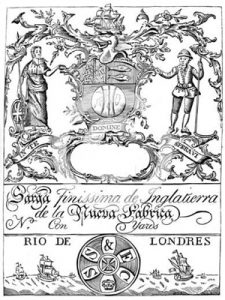
A trading label of the South Sea Company
The South Sea Company at the heart of the scandal was a trading company with a monopoly on trade in South America. The company was heavily linked with the government of the day, and a number of MPs owned large shares in the company.
Because of their shares in the company, members of the government began using phoney insider information to convince investors of the huge potential in South American trade, and therefore the profitability of the South Sea Company.
However, once investors realised that there was insider trading taking place, the company’s share price collapsed causing a catastrophic loss of money and property.
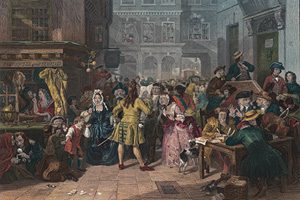
Edward Matthew Ward’s depiction of the South Sea bubble (1846)
Frantic bankers and members of the gentry who had lost their life savings stormed Parliament and the Riot Act was read to restore order. An enquiry found that more than 500 members of Parliament had been involved in the crash and the Chancellor of the Exchequer was imprisoned.
The South Sea Company Shilling
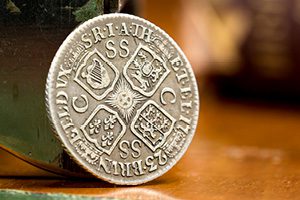
Reverse of the South Sea Shilling
On the brink of collapse, the South Sea Company luckily stumbled across a horde of silver in Indonesia and sold the precious metal to The Royal Mint.
The silver was minted into coins in 1723 with distinctive ‘SS’ and ‘C’ notations on the reverse. The proceeds from this silver helped enable the South Sea Company to recover from the scandal and ultimately continue operating for another century.
The shillings struck with this silver are now almost 300 years old and are a relic of a financial and political disaster which shook the whole country.
If you’re interested…
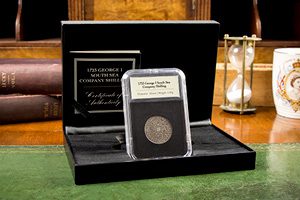
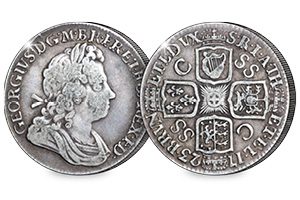
Historic silver issues are extremely difficult to source, however we have a small stock of just 50 South Sea Shillings available for collectors. Click here to find out more >>

